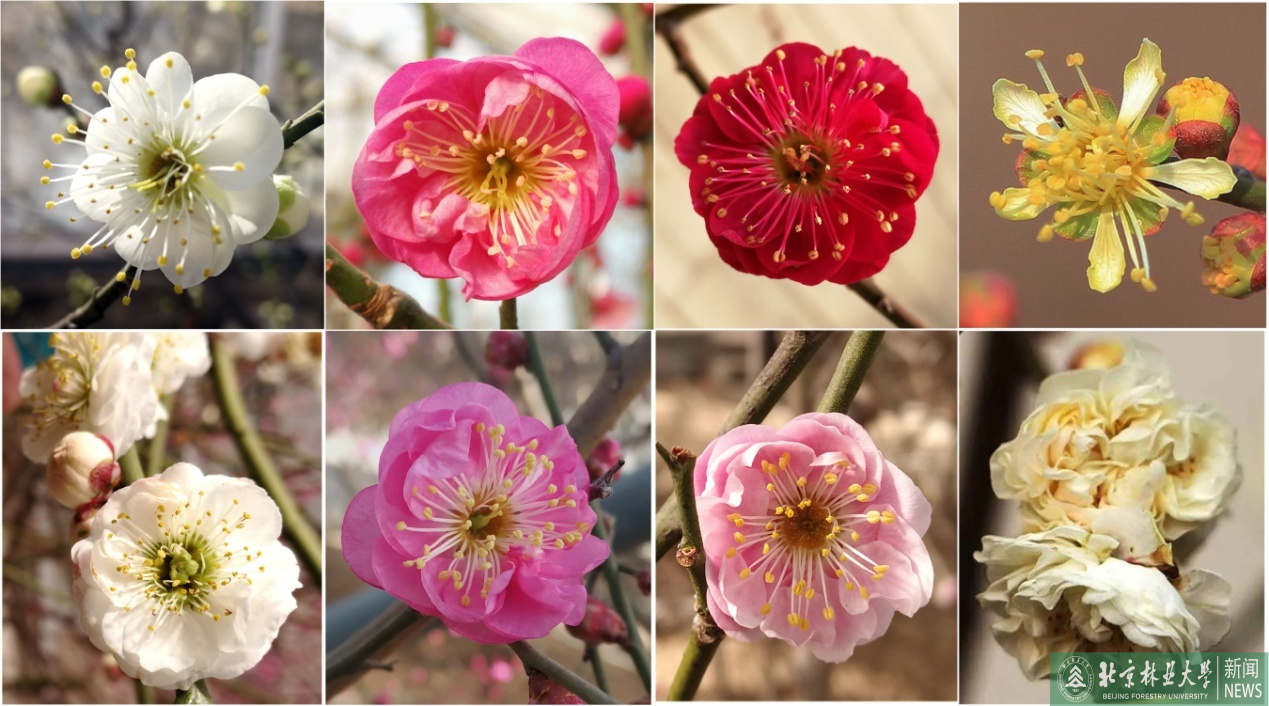Latest news
Recently, Professor Zhang Qixiang's team from the School of Landscape Architecture has made new progress in the molecular mechanism of the formation of plum yellow flowers. The research results "Integrative analysis of metabolome and transcriptome revealed lutein metabolism contributed to yellow flower. formation in Prunus mume "and" Phylogeny of PmCCD gene family and expression analysis of flower coloration and stress response in Prunus mume " were published online in the high level academic journals Plants-Basel (IF=4.50) and International Journal of Molecular Sciences (IF=5.60).

Prunus mume is a famous ornamental woody tree with colorful flowers. P. mume with yellow flowers is one of the most precious varieties. Regretfully, metabolites and regulatory mechanisms of yellow flowers in P. mume are still unclear. This hinders innovation of flower color breeding in P. mume. To elucidate the metabolic components and molecular mechanisms of yellow flowers, the research team analyzed transcriptome and metabolome between ‘HJH’ with yellow flowers and ‘ZLE’ with white flowers. Comparing the metabolome of the two varieties, the research teamdetermined that carotenoids made contributions to the yellow flowers rather than flavonoids. Lutein was the key differential metabolite to cause yellow coloration of ‘HJH’. Transcriptome analysis revealed significant differences in the expression of carotenoid cleavage dioxygenase (CCD) between the two varieties. Specifically, the expression level of PmCCD4 was higher in ‘ZLE’ than that in ‘HJH’. Moreover, the research teamidentified six major transcription factors that probably regulated PmCCD4 to affect lutein accumulation. the research teamspeculated that carotenoid cleavage genes might be closely related to the yellow flower henotype in P. mume. Further, the coding sequence of PmCCD4 has been cloned from the ‘HJH’ petals, and bioinformatics analysis revealed that PmCCD4 possessed conserved histidine residues, ensuring its enzymatic activity. PmCCD4 was closely related to PpCCD4, with a homology of 98.16%. Instantaneous transformation analysis in petal protoplasts of P. mume revealed PmCCD4 localization in the plastid. The overexpression of PmCCD4 significantly reduced the carotenoid content in tobacco plants, especially the lutein content, indicating that lutein might be the primary substrate for PmCCD4. the research teamspeculated that PmCCD4 might be involved in the cleavage of lutein in plastids, thereby affecting the formation of yellow flowers in P. mume. This work could establish a material and molecular basis of molecular breeding in P. mume for improving the flower color.
The first author of the above two papers is Ding Aiqin, a doctoral student from the College of Landscape Architecture of our university, and the corresponding authors are Professor Zhang Qixiang and Associate Professor Bao Fei.This work was supported by the National Natural Science Foundation of China (31800596 and 32271910).












